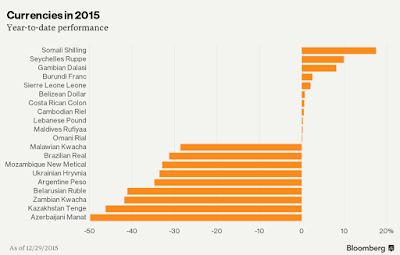Time to update Irish quarterly PMI readings for 4Q 2015. Please note: the following refer to average PMI readings per quarter as supplied by Markit.
Irish Manufacturing PMI averaged 53.7 in 4Q 2015, down slightly on 54.7 in 3Q 2015 and the lowest quarterly reading since 4Q 2013 (jointly tied for that honour with 1Q 2014). The quarterly average has now declined in every quarter since the period peak in 4Q 2014. Still, at 53.7 we have rather solid growth signal as is. On y/y basis, Manufacturing PMI is now down 5.1% after falling 2.6% in 3Q 2015 and rising 0.7% in 2Q 2015. 4Q 2015 marks tenth consecutive quarter of above 50.0 readings for the sector, with all of these readings being statistically above 50.0 as well. The trend in growth is down.
Irish Services PMI slipped from 62.6 in 3Q 2015 to 61.8 in 4Q 2015, down 1.3% q/q after posting a 1.4% rise q/q in 3Q 2015. On annual basis, the PMI fell 0.11% having previously risen 0.91% in 3Q 2015 and falling 0.48% in 2Q 2015. This marks 20th consecutive quarter of above 50.0 readings in the sector. In level terms, 61.8 signals robust growth in the sector, so it is a positive signal, albeit over time consistent with quite a bit of volatility and no strongly defined trend.
Irish Construction sector PMI (through November 2015) for 4Q 2015 stood at 55.9, down from, 57.1 in 3Q 2015 and marking the second consecutive quarter of index declines. Q/Q index was down 7.95% in 3Q 2015 and it was also down 2.16% in 4Q 2015. Y/Y, index was up 1.42% in 2Q 2015, down 7.6% in 3Q 2015 and down 12.4% in 4Q 2015. Volatile movements in the series still indicate downward trend in growth in the sector.
Chart above summarises the sub-trends, with Services trending very sluggishly up, while Manufacturing and Construction trending down.
As shown in the chart above, my estimated Composite measure, relating to PMIs (using sectoral weights in quarterly GDP figures) posted moderation in growth rate in 4Q 2015. Composite Index including construction sector stood at 54.4 in 4Q 2015, down from 55.5 in 3Q 2015, hitting the lowest reading since 3Q 2013. This marks second consecutive quarter of declining Composite Index. Index is now down 1.9% q/q having previously fallen 3.8% q/q in 3Q 2015. In y/y terms, Composite Index was up 0.8% y/y in 2Q 2015, down 3.5% y/y in 3Q 2015 and down 6.52% y/y in 4Q 2015. While levels of Index suggest relatively robust growth in the economy across three key sectors, there is a downward trend in the growth rate over time.
So in the nutshell, Irish PMIs continue to signal robust growth, albeit the rate of growth appears to be slowing down along the new sub-trend present from 1Q 2015 on.
Two charts to highlight relationship between PMI signals and GDP and GNP growth rates (data through 3Q 2015).



























